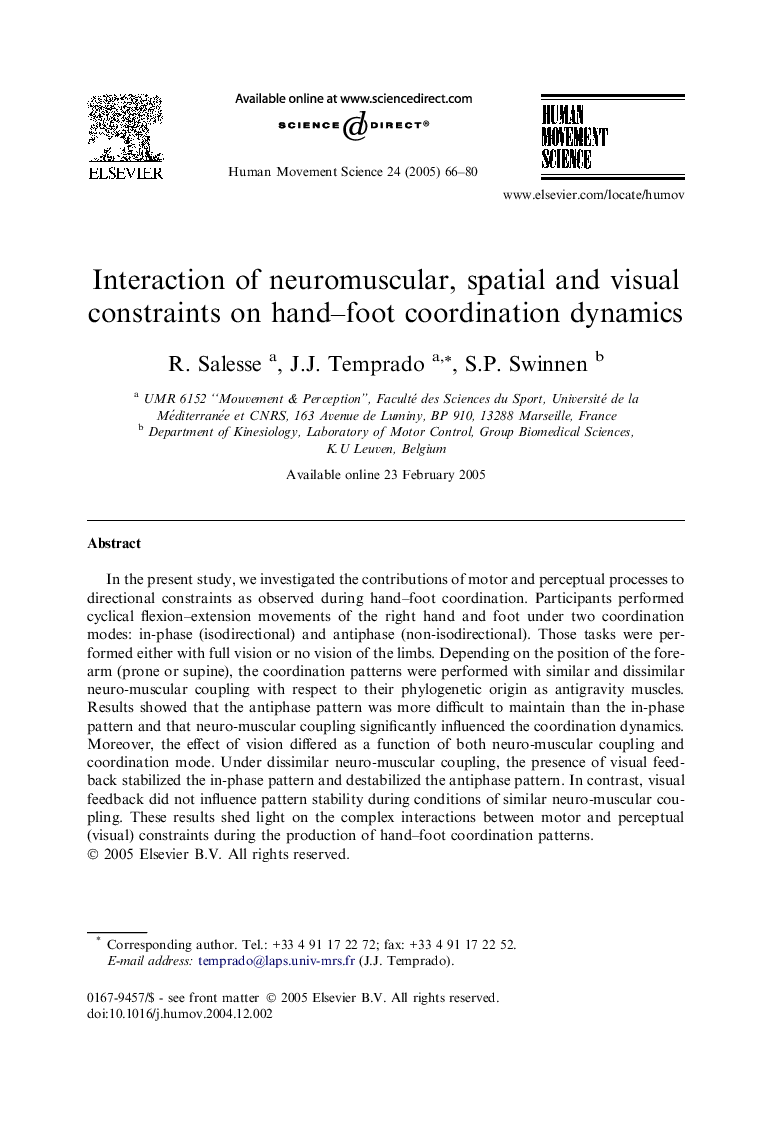| Article ID | Journal | Published Year | Pages | File Type |
|---|---|---|---|---|
| 10459350 | Human Movement Science | 2005 | 15 Pages |
Abstract
In the present study, we investigated the contributions of motor and perceptual processes to directional constraints as observed during hand-foot coordination. Participants performed cyclical flexion-extension movements of the right hand and foot under two coordination modes: in-phase (isodirectional) and antiphase (non-isodirectional). Those tasks were performed either with full vision or no vision of the limbs. Depending on the position of the forearm (prone or supine), the coordination patterns were performed with similar and dissimilar neuro-muscular coupling with respect to their phylogenetic origin as antigravity muscles. Results showed that the antiphase pattern was more difficult to maintain than the in-phase pattern and that neuro-muscular coupling significantly influenced the coordination dynamics. Moreover, the effect of vision differed as a function of both neuro-muscular coupling and coordination mode. Under dissimilar neuro-muscular coupling, the presence of visual feedback stabilized the in-phase pattern and destabilized the antiphase pattern. In contrast, visual feedback did not influence pattern stability during conditions of similar neuro-muscular coupling. These results shed light on the complex interactions between motor and perceptual (visual) constraints during the production of hand-foot coordination patterns.
Keywords
Related Topics
Life Sciences
Neuroscience
Cognitive Neuroscience
Authors
R. Salesse, J.J. Temprado, S.P. Swinnen,
